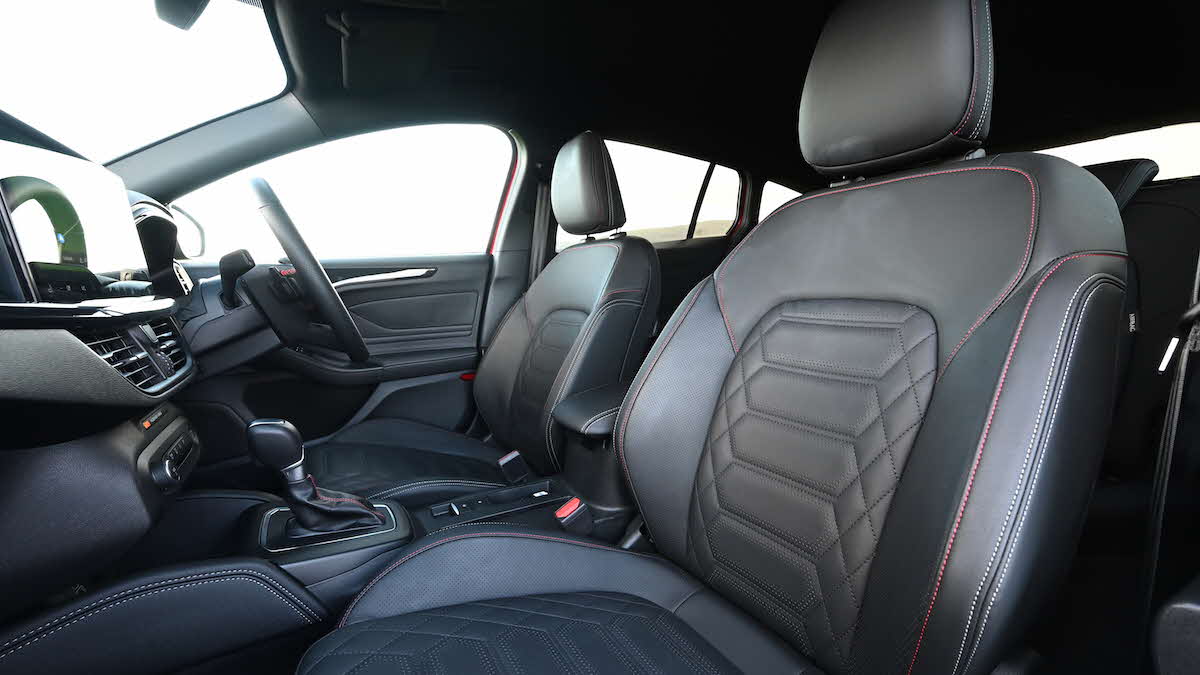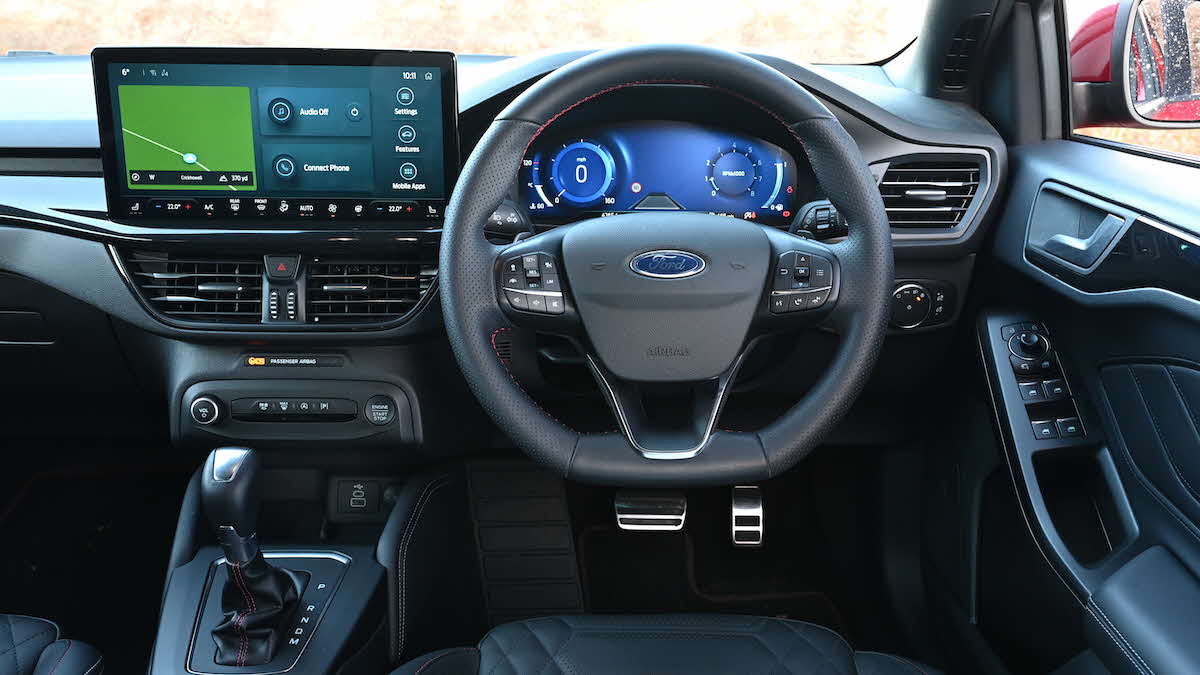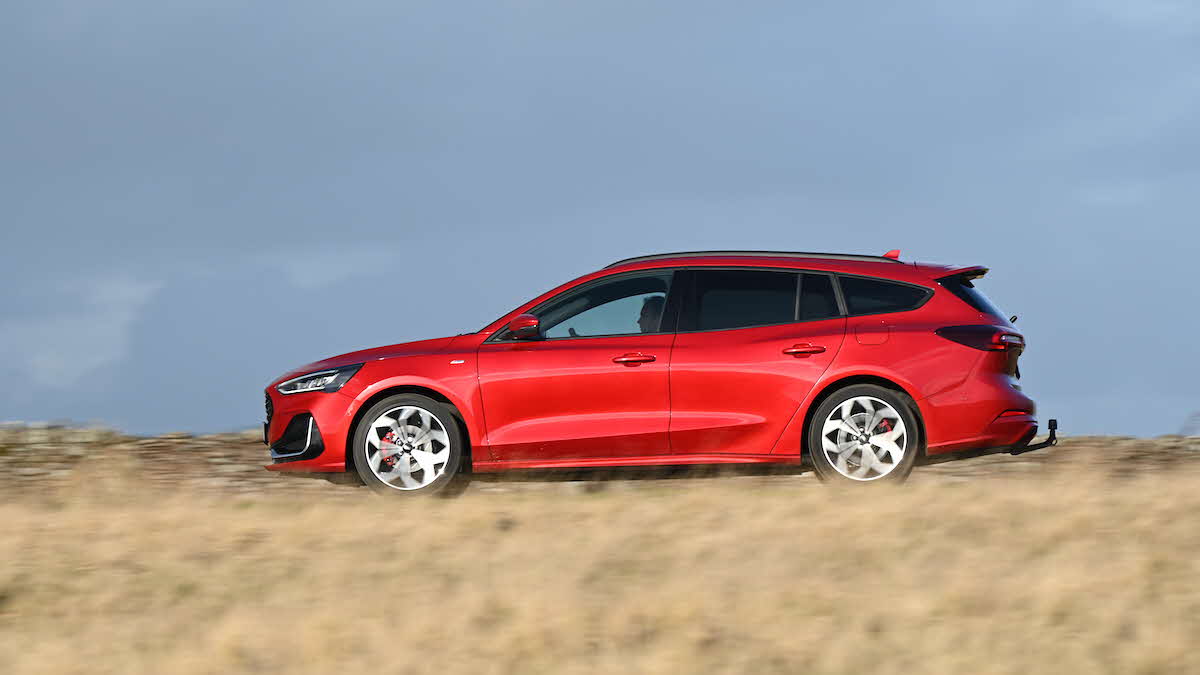Sharper Focus
Ford’s estate has been popular for decades… and now it features the latest technology, says James Batchelor
It wasn’t so long ago that the mid-sized family estate car would be the obvious choice if you were a person who wanted all the positive attributes of a hatchback, but required a little more space. These days, however, the SUV has become the common choice for most car buyers, including caravanners. Ford, for the time being at least, still believes in sensible load luggers, and the Focus has arguably been the very best of the genre since the late 1990s. The Blue Oval has recently updated it; let’s take a closer look.
Comfort – 75%

This isn’t the first time we’ve run the rule over the Ford Focus Estate, as it featured – and performed well – in the Caravan and Motorhome Club’s Towcar of the Year 2023 competition (Caravan Weight 1,200kg-1,300kg Class).
While it didn’t win, the Ford remains an excellent choice for those who perhaps feel pure-electric motoring is not for them just yet. The latest version is an update of the fourth-generation model, which arrived in 2018, and features a raft of styling and technology improvements. There’s a larger grille and the Ford badge has moved from the edge of the bonnet to sit within it. All models now receive LED headlights (with our test car getting the excellent, optional, £1,000 anti-dazzle ‘Matrix’ adaptive LED lights), while higher spec models get tweaked rear lights with a new LED signature. The changes are successful in our eyes and keep the Focus looking fresh against its rivals.
Ford has made improvements to the interior as well. The Focus’ tech arsenal was looking a little bit feeble compared to other offerings, but that’s no longer the case. While the competition can be miserly when it comes to standard equipment, surprisingly Ford fits a brand new, wide 13.2in infotainment screen to all models, and it runs Ford’s latest Sync 4 system.
The software is intuitive and very easy to use on the move, while the screen’s graphics are super sharp, and you get Apple CarPlay and Android Auto too. We would normally moan at physical air conditioning knobs and buttons being replaced with icons on a touchscreen, but these are still very easy to use.
The tech overhaul is completed with a new 12.3in digital display in front of the driver. It’s standard kit for all models bar the entry-level Titanium, and it looks fresh and is easy to use while driving.
Elsewhere, it’s typical Focus, so there’s a feeling of quality to the interior, and it’s easy to achieve a comfortable driving position with plenty of adjustment to the seat and steering wheel.
Back seat passengers, meanwhile, can really stretch out thanks to acres of legroom, although the heads of taller passengers might brush the roof – especially if you select the £1,045 opening panoramic roof in the options list, as it eats up even more space.
At 575 litres, the Focus’ boot is roughly on par with rivals like the Škoda Octavia and Volkswagen Golf; the space is usefully square and wide. There are some neat touches too, like hooks on either side, and a floor that can be lifted up and clipped in a vertical position to act as handy divider.
The rear seats split in a 60/40 fashion and there’s a ski hatch to load longer items; sadly, the front passenger seat doesn’t tumble to allow especially lengthy items to be loaded.
One option that is worth looking at is the Parking Pack, which adds Active Park Assist, natty little door protectors that pop out when the doors open, and a wider rear-view camera which is especially useful when reversing up to your caravan. Speaking of which, Ford only offers a detachable tow hook for a pretty considerable £750.
Driving – 95%

The Focus has always been the most fun car of its type to drive since it burst onto the scene in 1998. This version’s chassis has an agility and sharpness that is genuinely surprising; not only does the Focus show up certain cars that cost twice the price, but it makes all equivalent SUVs seem stodgy in comparison. The sharp chassis is backed up with light and accurate steering, making country road driving a genuine pleasure.
A great chassis is nothing without a great engine, though. With this update, Ford has taken an axe to the engine range and now only offers a 1.0-litre mild-hybrid petrol with two power outputs, and a rather uninspiring 1.5-litre diesel – disappointingly, there are no full-hybrids or plug-in hybrids.
Our test car was the higher output 1.0-litre petrol mated to a seven-speed dual-clutch automatic gearbox. With 153bhp and just three cylinders, it doesn’t sound up to the job, but those on-paper stats belie what is a very strong little powerplant.
Towing – 72%
Indeed, compared to other machinery in the Towcar of the Year 2023 competition, the Focus’ 1.0-litre three-cylinder engine looked a little weak. But what it lacks in cubic capacity, it more than makes up for in punch. During the gruelling competition judging, the fully-ballasted Focus –carrying a similarly fully-ballasted caravan – bounded around the Millbrook testing facility’s most arduous stretches of asphalt. Only on the 26% incline did it slightly falter. In all other circumstances the Focus tows with remarkable confidence, delivering a smooth and unflustered drive.
Verdict – 81%

Some caravanners will only ever be interested in SUVs, but the Focus is very worthy of consideration – it’s wonderful to drive and now has the latest technology on board.

